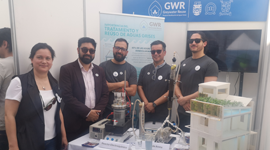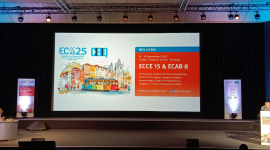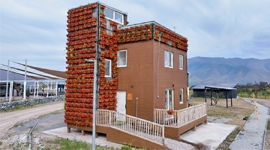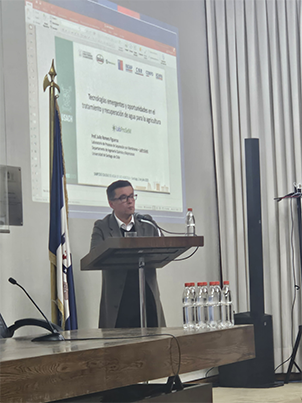You are here
Greywater for Agricultural Irrigation: An Ongoing Opportunity

At the event organized by Achipia (the Chilean Agency for Food Safety and Quality), participants analyzed the technical, regulatory, health, and production aspects of advancing the use of treated water for safe irrigation.
Given global water scarcity and Chile's particular vulnerability in this regard, there was general consensus on the need to use new water sources. According to reports from specialized entities, such as the World Resources Institute and the Aqueduct Water Risk Atlas, Chile is classified as a country with high water stress.
The possibilities of using treated graywater to irrigate various agricultural crops were analyzed in depth, including both currently permitted and prohibited methods.
In general, there was a consensus that treated graywater has significant potential for agricultural irrigation as technological advances make it possible to produce water of an acceptable quality that meets or exceeds standards. The greatest challenges were identified as being related to people, specifically ensuring they use the facilities properly and allowing the systems to function adequately. There was agreement on the need to promote adequate education to create a new "water culture."
One challenge identified was ensuring the proper maintenance of systems installed in homes or spaces managed by individuals.
Dr. Julio Romero, a researcher for the GWR Project, gave a presentation on membrane thecnology.
Data Availability and Traceability
Virtually all exhibitors desire to centralize and share data on water availability and quality, regardless of the organization that generates it, to promote the development of robust, continuously growing knowledge. In this regard, emphasis was placed on promoting a culture of collaboration among all research entities and, ideally, incorporating the agricultural business community to generate synergies.
Technically speaking, presentations emphasized controlling health risks, generating solid implementation models, and maintaining facilities.
News
 GWR project at the Environmental Fair
GWR project at the Environmental Fair
 GWR researcher participates in major science conference in Portugal
GWR researcher participates in major science conference in Portugal
 The GWR Project has achieved the technological integration of gray...
The GWR Project has achieved the technological integration of gray...


